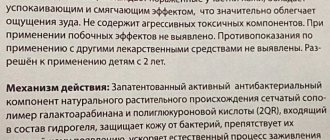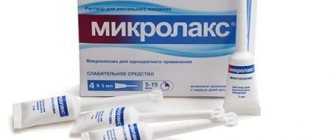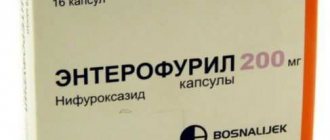Why do children develop candidiasis?
Candidiasis in children develops due to excessive proliferation of pathogenic microflora. This is facilitated by a decrease in immunity against the background of viral infections or other complex diseases. Fungi can affect completely different parts of the body, and characteristic symptoms appear not only on visible surfaces. A young patient often develops thrush of the esophagus or large intestine.
The following reasons can provoke candidiasis:
- long-term use of antibacterial agents;
- hypothermia;
- hormonal changes in the body during puberty;
- frequent colds;
- insufficiently humidified air in the room.
Children can inherit pathology from their parents, especially infants. The disease should not be allowed to become chronic or generalized, as it will not be easy to get rid of it. And the treatment itself must be comprehensive.
Indications for use
Most often, the product is used to combat stomatitis and thrush. Children's Fluconazole is also prescribed to children for the treatment of the following diseases:
- cryptococcal meningitis (especially against the background of severe immunodeficiency due to HIV or AIDS);
- pityriasis versicolor;
- fungal infection of the skin, genitals;
- generalized forms of candidiasis, which spread throughout almost the entire body;
- onychomycosis;
- dermatomycosis;
- candiduria;
- balanitis;
- endemic mycosis.
Fluconazole is used not only for the intensive treatment of children. The drug is also prescribed for the prevention of diseases if they occur more often than once every 3 months. The remedy is also necessary for those children who are forced to undergo chemotherapy courses for the treatment of malignant neoplasms.
Fluconazole effectively destroys pathogenic microorganisms . Despite the fact that it should not kill beneficial microflora, the doctor prescribes probiotics for the child after a course of therapy.
Fluconazole copes well with symptoms, and also eliminates the very cause of the disease. However, the medicine must be used correctly.
Contraindications and restrictions
Fluconazole should not be taken by children with an allergic reaction to any component of the drug. It should only be used if prescribed by a doctor. Self-medication is fraught with the development of serious complications . In addition, there are fungal microorganisms that may be insensitive to Fluconazole. Taking this medicine in this case will only worsen the baby’s condition.
You also need to take into account the following contraindications:
- chronic pathologies of the kidneys and liver, as well as impaired functionality of these organs in a decompensated form;
- problems with the heart and blood vessels;
- age up to 4 years;
- simultaneous use of drugs based on Cisapride, Astemizole;
- problems with the functionality of the hormonal system.
It is strictly forbidden to use Fluconazole without prior consultation with your doctor. Children's immunity is not yet developed well enough to cope with complications caused by improper use of the drug.
Dosage
Adults are recommended to take 400 mg on the first day, and then 200 or 400 mg, depending on the degree of damage. Treatment lasts from a week to a month. It is administered intravenously using droppers. It is also worth considering the fact that different diseases require greater or lesser concentrations of the drug, so before use you should definitely consult with your doctor.
The instructions for medications that contain fluconazole indicate that children over 4 years of age can take it without much concern; the dosage is significantly less than for adults. Of course, when prescribing a particular drug, a doctor must take into account the child’s personal tolerance to all the substances included in the composition. Children from fifteen years of age, according to doctor's indications, take adult dosages.
As for newborns and children under 4 years old, there are some nuances. It is strictly forbidden to take it for up to three months, because it is excreted from the body very slowly. At the age of 3 to 6 months, the daily dose should not exceed 12 mg.
Children from one to three years old can take 1 capsule of 50 mg every 48 hours. At this age of the child, the doctor must decide whether treatment with this drug will bring more benefit or harm. If this medicine is not suitable, it is better to choose another one. If you have a small child, never make your own choice; without the necessary education, you cannot choose medications, especially for children.
Features of use in newborns and young children
The use of Fluconazole for the treatment of children under 4 years of age is not recommended, but in especially severe cases, the doctor may prescribe this drug. Depending on age, the dosage will be as follows:
Age | Norm |
| Grudnichkovy | The dosage of the drug is 50 mg per day. In this case, it is necessary to give the child Fluconazole every 3 days. After the baby turns one year old, he will be able to take the drug once every 2 days. Parents should follow the doctor's orders and not stop therapy immediately after symptoms disappear. The entire course of using Fluconazole must be followed. For the treatment of infants, this remedy can be used when the infection is generalized |
| Children under 4 years old | Here Fluconazole is contraindicated in most cases, and it is better to replace it with Diflucan in the form of a suspension. Depending on the child’s body weight, a single dose is 3-12 mg of the main active ingredient per 1 kg |
If possible, it is better to replace Fluconazole with another drug to treat a child of this age.
Drug interactions
Undesirable reactions when taking fluconazole together with other drugs are possible in the form of arrhythmia, allergies, psychomotor effects, diabetic manifestations, and intoxication of the body. There are known cases of the acquisition of blindness. Monitoring is required with the possibility of dose adjustment when treating with fluconazole in combination with the following drugs:
- chlorpropamide, glipizide, glibenclamide, tolbutamide;
- phenytoin;
- cyclosporine;
- warfarin;
- rifampicin, rifabutin;
- erythromycin;
- zidovudine
Instructions for use
The dosage of Fluconazole for children, as well as the duration of use, depends on the effectiveness of therapy, the severity of the infection, as well as the age and weight of the child. Most often, children are prescribed 1 tablet of the drug throughout the day. The maximum daily dose of Fluconazole is 400 mg. This norm is necessary for the development of cryptococcal meningitis.
The standard treatment regimen is as follows: the child is prescribed 6 mg/kg on the first day of treatment, and then this amount of medication is halved. The duration of the course is 14 days. If the patient weighs more than 50 kg, then an adult dosage must be used. The course of therapy with Fluconazole is 1 week.
If body weight is less than 50 kg, then the standard dosage of the drug is 50 mg. If the infection has spread too much, then for additional effect, children are prescribed Fluconazole in the form of suppositories and ointments. For cryptococcal meningitis, the duration of treatment increases to 1.5 months. The drug is discontinued only if the pathogen is not detected in the patient’s body.
Depending on the type of pathology, the dosage of Fluconazole may be as follows:
- Oral candidiasis. If the children's weight is between 15-20 kg, then they take 3 tablets on the first day of therapy, and then 1 capsule per day. With a weight of 20 to 30 kg, the norm on the first day is the same, and in the subsequent period it doubles. If the weight is 30-40 kg, then initially the child is given 5 capsules, and then 2 daily. Therapy lasts 3 weeks.
- Candidiasis of the esophagus. Here therapy also depends on the child’s body weight:
- 15-20 kg – 1 capsule of Fluconazole per day;
- 20-30 kg – 1-2 tablets;
- 30-40 kg – 2 capsules/day;
- 40-50 kg – up to 3 tablets throughout the day. The general course of treatment is 5 weeks.
If thrush is localized only in the oral cavity, then the powder is first diluted with water, and then the affected tissue is treated with this mixture using a cotton swab.
Therapy for candidiasis also involves strengthening the immune system. For this, not only probiotics are used, but also multivitamin preparations. It is also important to organize a rational and nutritious diet.
Release form
Diflucan can be found on pharmacy shelves in the form of a suspension. The drug is available in plastic bottles. Inside the container there is a white powder that is diluted with water. The finished mixture looks like a white thick syrup and has a characteristic orange smell. The medicine can also be found in the form of capsules and injection solution. The choice of release form depends on the medical history and duration of therapy, and the doctor’s recommendations.
Capsules
Diflucan is used for treatment in the form of tablets that are taken orally. The capsules have a characteristic blue color. For children with fungal diseases, about 6 mg per 1 kg of weight is prescribed. Subsequently, the dosage is reduced to 3 mg per 1 kg. Take the medicine 30 minutes before meals. There are a number of specific forms of infections for which other uses are prescribed. Changing the dosage is possible only with the consent of the doctor. To prevent relapse of candidiasis, take a single dose of Diflucan in the amount of 150 mg.
Powder for preparing suspension
Children are very picky when it comes to taking medications, so it is important that the drug does not have a repulsive taste. One of the most popular forms of release is Diflucan suspension.
It has several dosage options and is used to treat various fungal diseases. In addition, along with the bottle, the package contains a special measuring spoon with divisions for ease of use. You need to drink Diflucan syrup prepared from powder once a day, regardless of the time you eat. The dosage for the child is prescribed by the doctor.
Solution
Sometimes the clinical picture of the disease forces the use of other forms of drug release. Diflucan solution is a clear, colorless liquid. Fluconazole is administered intravenously to children at a rate of no more than 10 ml/min. The medicine quickly penetrates the tissues and fluids of the child’s body. The method of application and dosage depends on the severity and nature of the fungal infection. Consumption is not tied to meal times.
What side effects are possible?
The doctor prescribes Fluconazole to the child to fight fungal diseases. However, the child’s body does not always adequately perceive the medicine.
Your baby may experience the following side effects:
- disruption of the functionality of the gastrointestinal tract;
- change in taste sensations;
- decreased appetite;
- vomiting, as well as discomfort or pain in the area around the navel;
- in rare cases, toxic liver damage is possible;
- diarrhea;
- problems with the functionality of the nervous system: children become irritable, capricious, their mood often changes, and they feel dizzy;
- convulsions;
- lethargy and constant fatigue;
- allergic skin rash;
- nosebleeds.
As you can see, a child needs to take Fluconazole carefully. After the course of therapy, the baby needs to take a blood test to determine the level of hemoglobin. If the dosage is exceeded or the drug is used incorrectly, children develop swelling and arrhythmia. In difficult cases, a young patient experiences nervous breakdowns and behavioral disturbances. He can even hallucinate.
What can replace Fluconazole?
If you are in doubt whether Fluconazole can be taken for children, you can replace it with other drugs.
Among them the following stand out:
- Nystatin . The product can not only destroy pathogenic microflora, but also prevent its further development;
- Diflucan . This drug is quickly absorbed into the gastrointestinal tract, but is also quickly eliminated from the body, so there is a risk of side effects. The drug is suitable for long-term treatment, which is necessary for the chronic form of the disease;
- Flucostat . The presented product has a selective effect, therefore it destroys only pathogenic microorganisms. Despite the fact that the main component is fluconazole, the drug has a milder effect.
Treatment of fungal diseases in children is carried out with various drugs, but you should not do it yourself. Fluconazole is a cheap and effective remedy, but not all doctors consider it absolutely safe. Before use, you need to consider possible contraindications, and also review the list of side effects. Improper use of any medication only aggravates the patient's condition.
Analogues of the drug
Medicines similar in composition are:
- Nystatin. Active substance: an antibiotic that affects pathogens and promotes their death. In small dosages, the medicine prevents the growth of bacteria, and in large doses it destroys pathogens. Nystatin acts mainly against Candida fungus. Release form: suppositories (rectal and vaginal), ointment, tablets. When using suppositories for treatment, a course of two weeks is sufficient. Complex treatment is possible (ointments, tablets and suppositories). Nystatin should not be used for liver diseases, gastric ulcers, pregnant women or nursing mothers.
- Diflucan is an antifungal medicine available in the form of tablets, capsules, and powder. The advantage of Diflucan is its rapid absorption and excretion from the body. The dosage is 150 milligrams per day. Duflucan is often prescribed by the attending physician during complex therapy against fungal diseases. A standard course of antifungal therapy is enough to cure the disease. If the disease has become chronic, then drink it once a month for 4–12 months until relapses stop.
- Flucostat. The use of the medicine is aimed only at pathogenic flora, but does not destroy the bacteria necessary to maintain healthy microflora. Release forms: capsules, solution. Active substance of the drug: fluconazole. Doctors say that the drug is more easily absorbed by the body than all medications in this series. In the early stages of thrush, one tablet is sufficient for complete cure.











